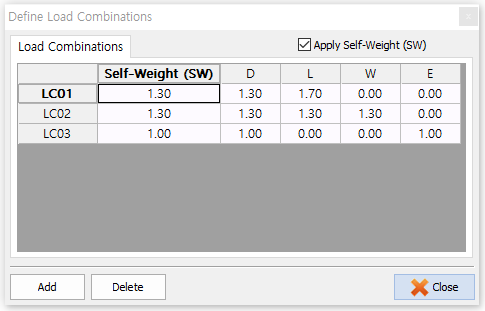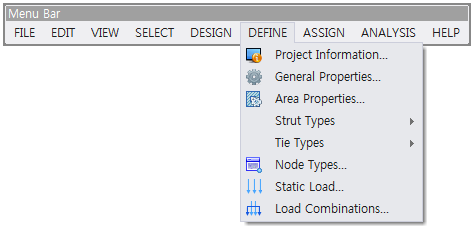
Project Information...
The necessary information that must be included in the structural design report including the types of structural analyses (ESO, Stress Flow, Truss), number of load combinations, and mesh sizes for stress flow and ESO analyses are set here. Caution is needed: when a check mark in the analysis box is removed, the corresponding previous modeling information will be deleted.
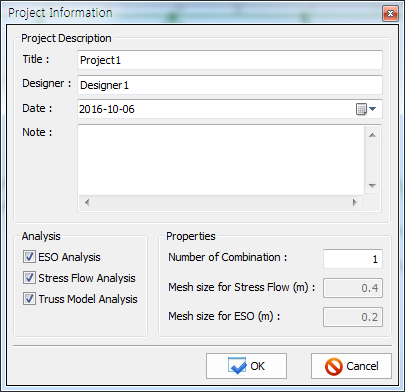
General Properties...
The strength reduction factors of strut, tie, and node are assigned here. The sectional and material properties of reinforcing bars and concrete are also assigned.
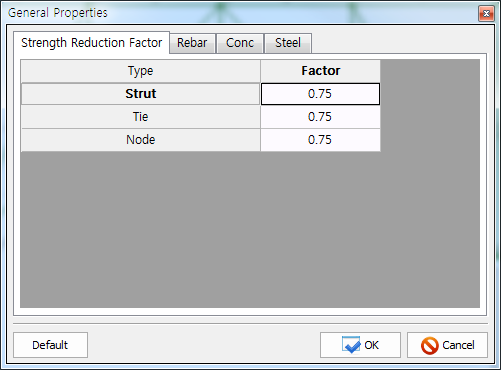
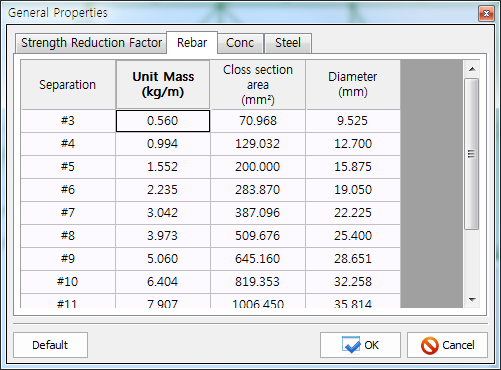
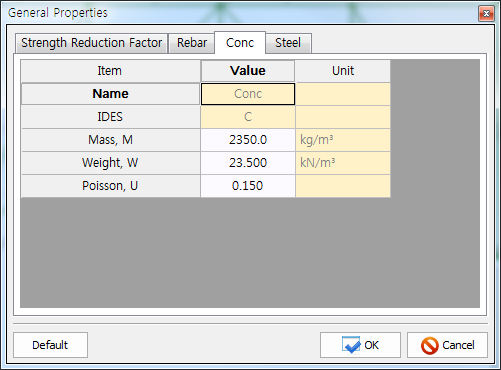
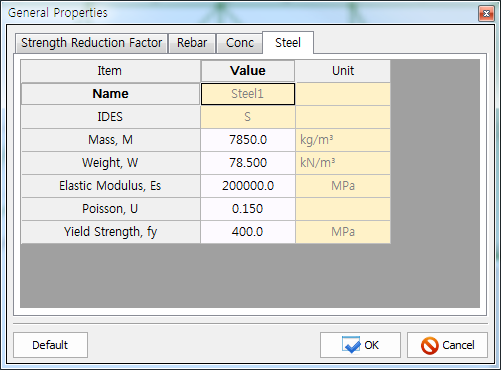
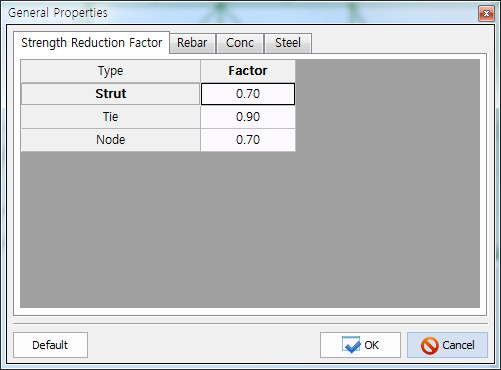
EuroCode 2 (2004)
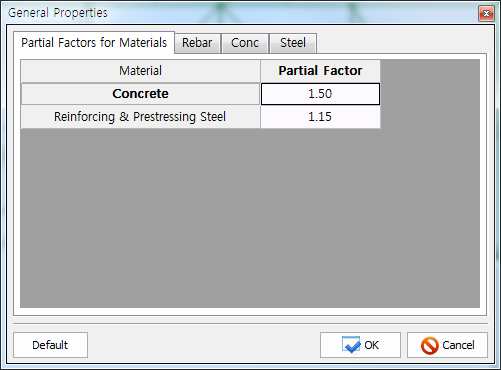
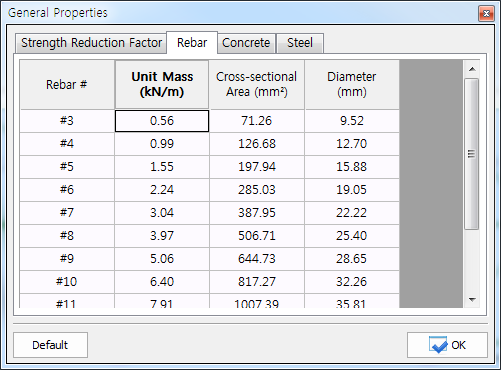

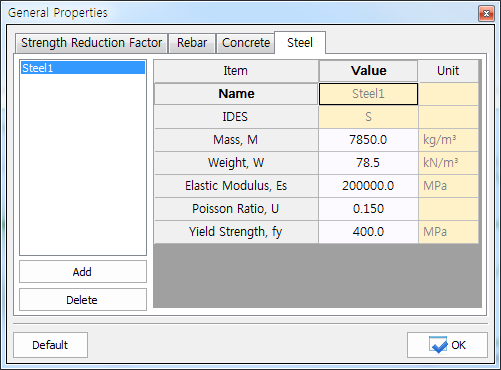
Area Properties...
The thickness and material properties of a concrete member are assigned here.
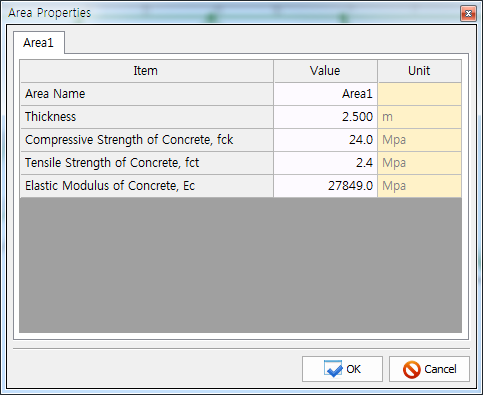
Strut Types
Default types of concrete struts in a strut-tie model are defined here. More strut types can be added.
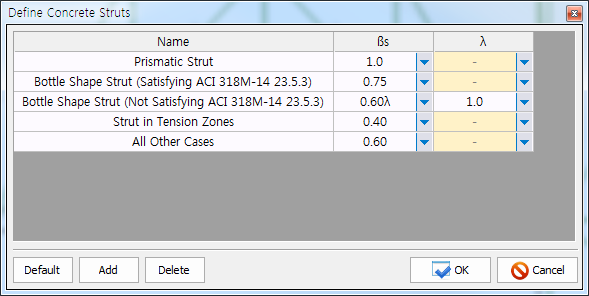

EuroCode2 (2004)
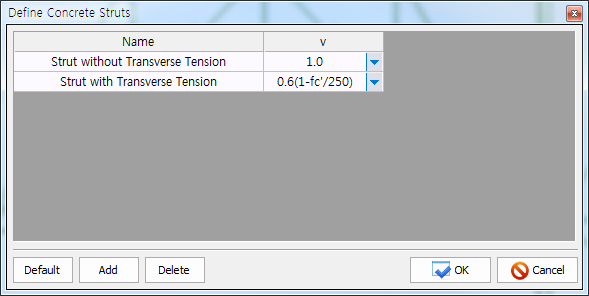
Tie Types
The steel ties in a strut-tie model represent the main reinforcing bars, shear reinforcing bars, and supplementary reinforcing bars of a concrete member. Two different types of reinforcing bars in a horizontal layer and up to 4 vertical layers.
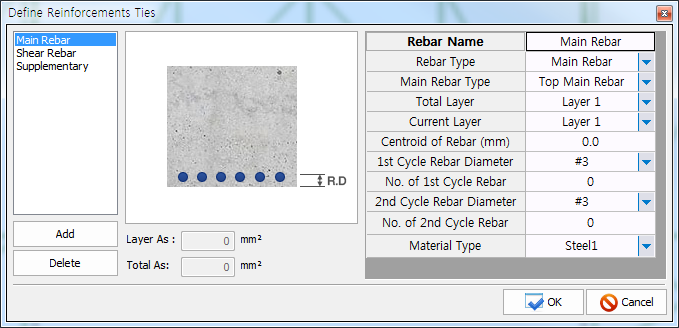
- 1st Cycle Rebar and 2nd Cycle Rebar
It is used when a reinforcing bar is mixed with reinforcing bars of different diameters at the time of casting.
If the same rebar applies, enter it only in 1st Cycle.
The cycle concept can be applied even when diameter and length are different as shown in the illustration below.
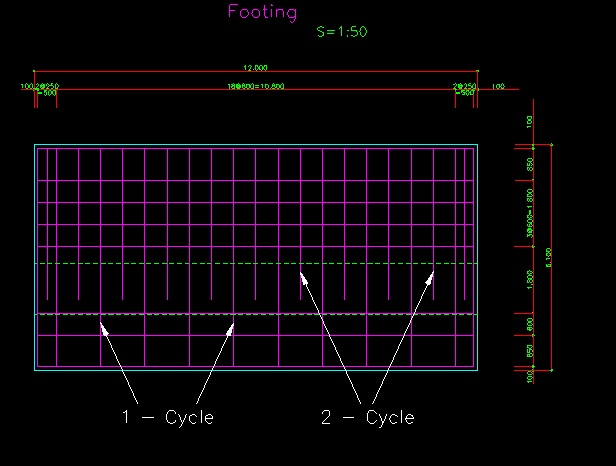
The shear reinforcing bars can be divided into horizontal, vertical, and inclined reinforcing bars. The information on the shear reinforcing bars is required.
For the horizontal or vertical supplementary reinforcing bars, the number of legs and layers must be assigned.
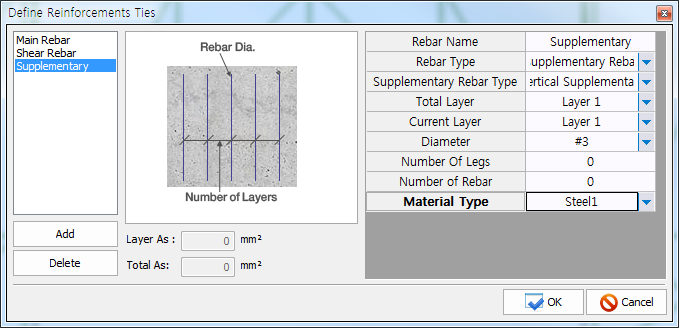
Node Types...
Three types of nodes in a strut-tie model are defined here. More node types can be added.
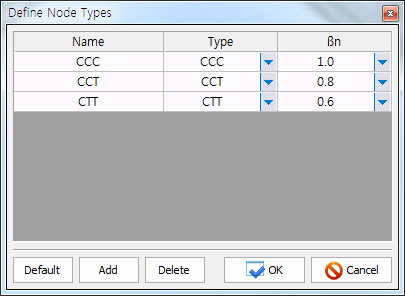
Static Load...
Default types of loads are defined here. More load types can be added. However, the name 'SW' is the reserved word that means self-weight. Therefore, the name 'SW' can not be used.
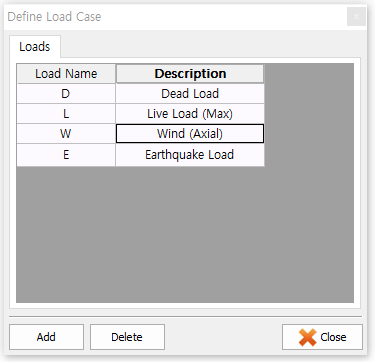
Load Combinations...
The load combinations that must be considered in the strut-tie model design are defined here. More load combinations can be added. Although the number of load combinations can be changed in the DEFINE-Project Information, it can also be changed here by adding or deleting the combinations. Caution is needed because the information on the finite element models related to a certain load combination is removed when the load combination is deleted.
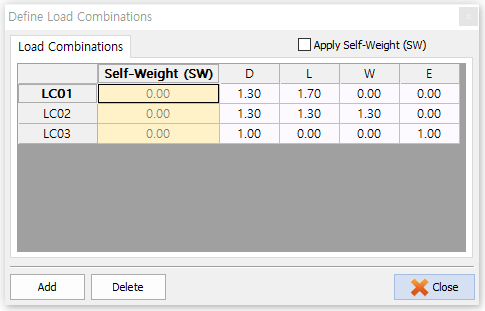
In order to consider self-weight, the 'Apply Self-Weight (SW)' button shall be checked. Self-weight is automatically calculated and applied within the program.
